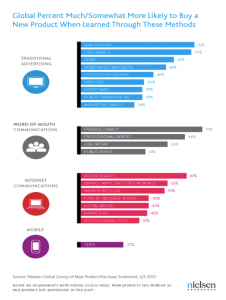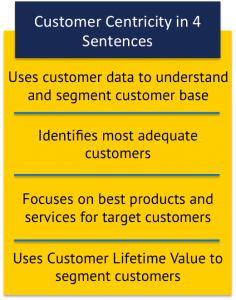Do you know the difference?
Recently I have been seeing a lot of articles and blogs using both terms interchangeably as if they have the same meaning. Writers and even marketers are getting confused about the proper use of these terms for business purposes; however, any company that is willing to become successful nowadays need to understand the difference between the two terms — and be ready to embrace both of them.
So what’s the difference? For starters, the Brand Advocate approach is focused on the customer experience (delivering something *to* the customer), whereas the Customer Advocate is focused on customer lifetime value (CLV) and segmentation (learning something *from* the customer). Identifying the correct approach can affect your marketing strategy planning as well as the results.
A Brand Advocate is an individual that not only is a loyal consumer of your product or service, but someone that has had a great experience and is eager and willing to share that experience with others. As these loyal customers become online influencers, their recommendations will bring awareness to your company through the millions of social media followers they may have. Therefore, Brand Advocates play a key role in customer referrals, commonly known as word-of-mouth, marketing strategy.
As online and social media marketing continues to achieve broader impact, that role of Brand Advocates in influencing the outreach of a new and wider audience has been crucial and impactful, but still not fully acknowledged. According to a study performed by Nielsen, 92 percent of people trust recommendations from friends and family more than all other forms of marketing*, but a staggering percentage of marketers, 72%, still do not recognize and leverage the value of word-of-mouth marketing**.

A recent example of the power of word-of-mouth, although through a negative lens, is the social media storm surrounding the Honest brand Sunscreen failure. A few customers posted images of themselves with sunburns, alleging that they did use the brand’s sunscreen, but it failed to work (for them). In a few hours, it became a trendy online topic, and more customers were adding their voices to these claims. Although this is an example of how negative feedback can affect your business, my main point is to highlight how word- of-mouth can have both positive and negative implications to a business. However, by observing and listening to your brand advocates, you can predict and prevent negative practices, before they escalate, as well as by listening to your loyal customers, you can engage them in a community that will be happy to endorse and promote your products and services.

A Customer Advocate is an internal function within a company or an organization in which someone has the focus to thoroughly study and analyze the needs of its customers, capture those customers’ needs and expectations, translate those needs, and assist their company in fulfill its customer expectations in a timely and cost effective manner.
Any company that is customer-centric, meaning that their core philosophy focus in emphasize their business model around best customers identification and enhanced customer experience, understand the importance of having a Customer Advocate in the house. They fully understand the value of focusing marketing efforts on the identification of proper customer segment to drive profit, and they are willing to invest on it.
Why you need to know the difference…
We can argue that the misuse of both terms may be a minor mistake, with little effect on your marketing strategy. I would agree with that, except that now, as customer advocacy is picking up speed within SaaS companies, it can become problematic if we start using these terms inappropriately. A business that is invested in customer-centric practices will see the value in investing in a Customer Advocate, but may not see the value in a Brand Advocate, as they prefer to target their operations in identifying the best customers, and not customers that will become evangelists of their products, services, and brand. (The person who buys the most from you, and the person who influences the most purchases are often not the same at all.)
Regardless of which approach your business chooses to take, Customer Focus or Customer Centric (and, by the way, it is possible to be both), remember to always keep your customers best interests at heart. By building and engaging a community of customers that is satisfied with your products and services, by listening to their experiences and expectations, and by taking action in improving their experience, you will end up having a legacy that will produce not only loyal customers but true brand evangelists.
Contact Us if you would like to hear more about how to create your own communities.
Source:
-
http://www.google.com/url?q=http%3A%2F%2Fwww.nielsen.com%2Fus%2Fen%2Freports%2F2012%2Fglobal-trust-in-advertising-and-brand-messages.html&sa=D&sntz=1&usg=AFQjCNFTCHJ0u_0Jz1NOp4fAwEzAOV6vqQ
-
http://factbrowser.com/source/loyalty360/?source=906&page=3
-
http://www.mycustomer.com/feature/experience/time-integrate-employee-development-customer-service-and-tea








